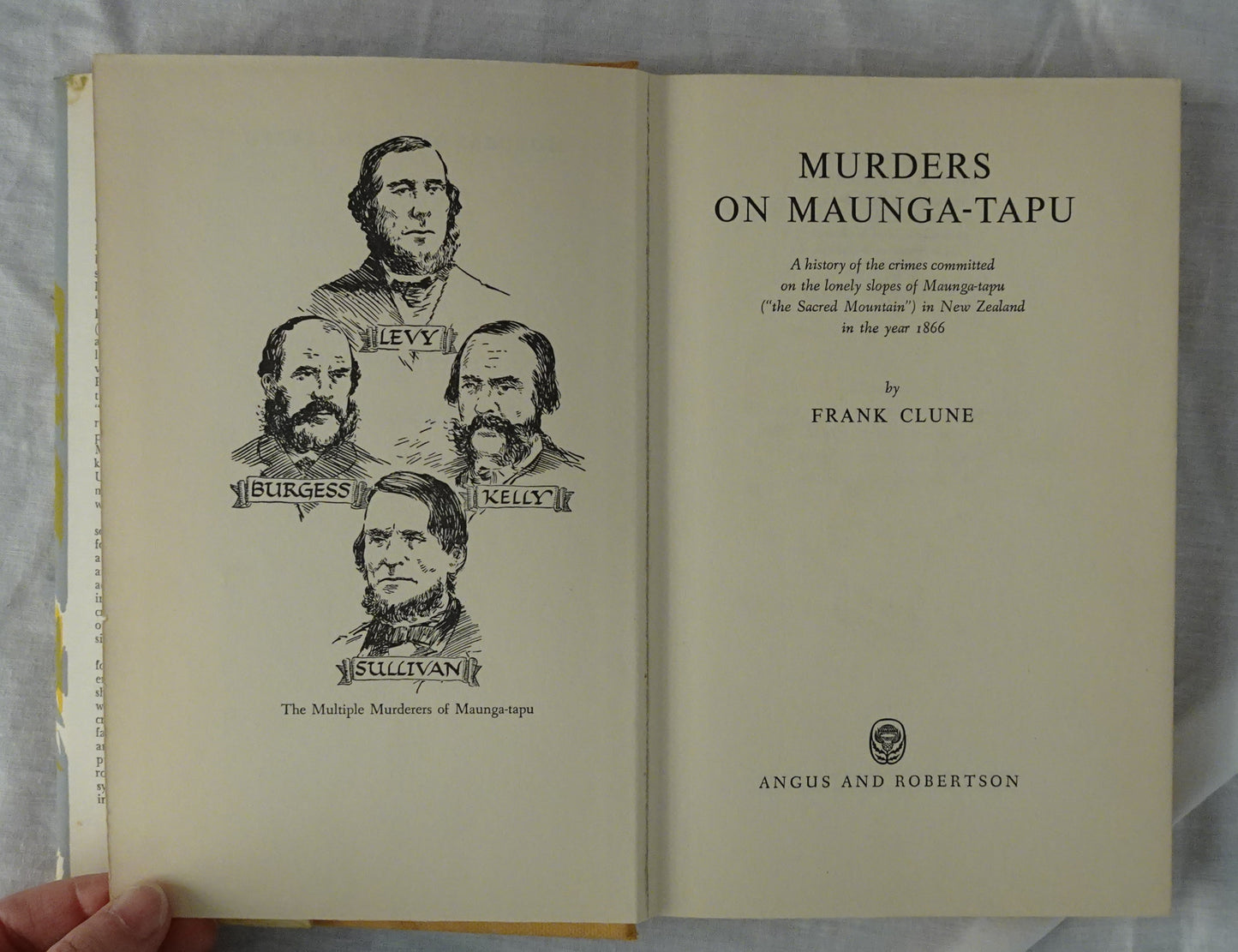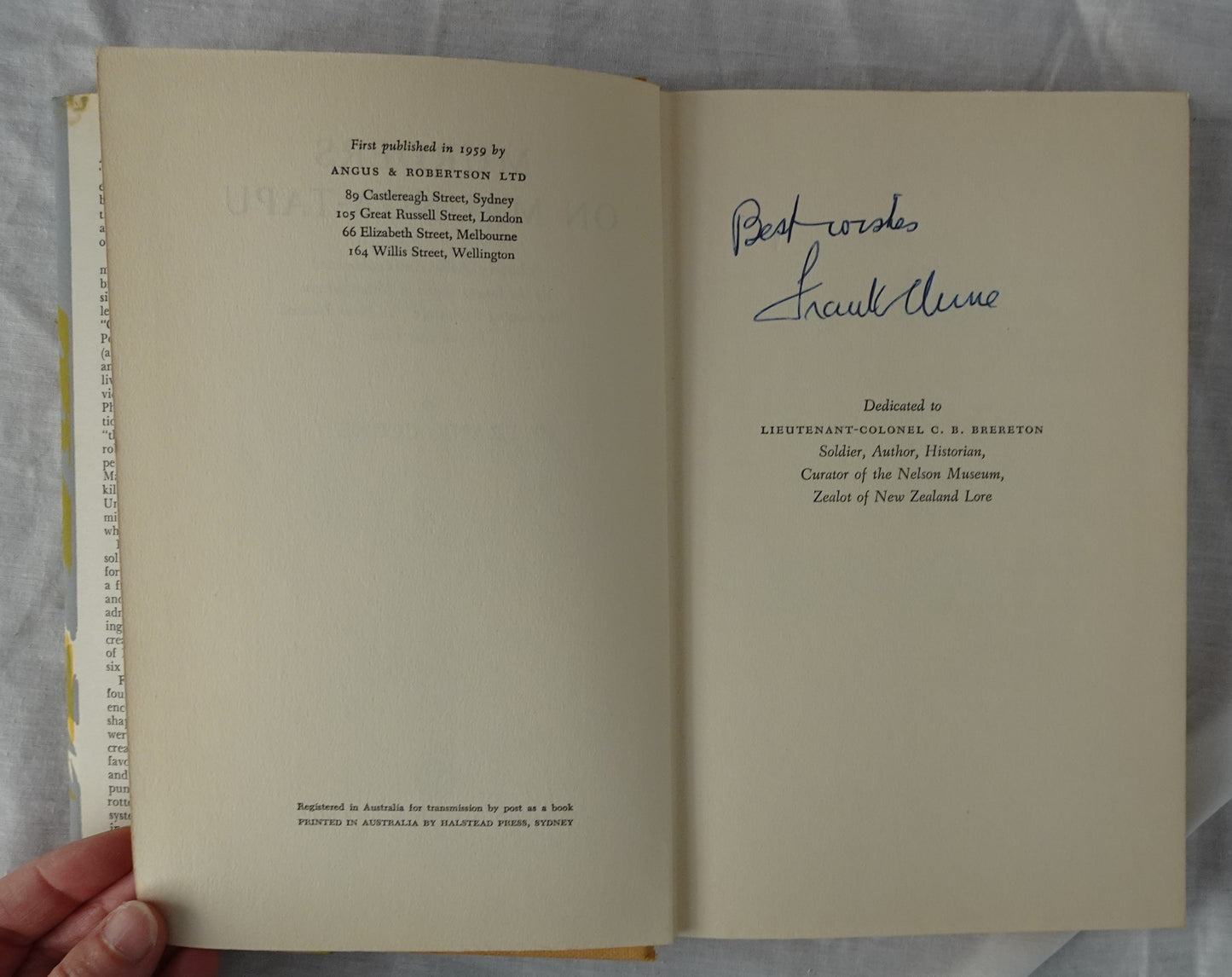Murders on Maunga-tapu by Frank Clune
Murders on Maunga-tapu by Frank Clune
Couldn't load pickup availability
Murders on Maunga-tapu
A history of the crimes committed on the lonely slopes of Maunga-tapu (“the Sacred Mountain”) in New Zealand in the year 1866
by Frank Clune
Angus and Robertson, 1959, [First Edition], [Signed], illustrated frontispiece, hardcover, dustjacket
Very Good Condition, Signed by Author on dedication page, a little edge and shelf wear, a little rubbing and bumping to edges and corners, tape residue to endpapers and covers, dustjacket shows some edge and shelf wear with a little rubbing and bumping to edges and corners, marking and discolouration to edges, staining to spine and back of dustjacket (see photographs)
“Armed robbery, murder, lies, treachery, “confession”, and a legal tangle that ended in a sensational trial followed by three executions: these are some of the chief ingredients in this grim account of a callous crime committed on the New Zealand goldfields in 1866.
This is also an unusual study of the mental make-up of the four lying, brutal Londoners who were responsible for the crime: Dick Hill, their leader (alias “Richard Burgess”, alias “Charlie Harris”, originally exiled to Port Phillip); Tom Noon or Noonan (alias “Tom Kelly”, London Irishman and transported convict); Joseph Sullivan (London Irish, transported convict, prize-fighter, and publican); and Phil Levy (London-born, no convictions, suspected by the police, but “the cleverest of the four”). The four robbers waylaid five gold-laded prospectors on a lonely bush track on Maungatapu, “the Sacred Mountain”, killed their victims and hid the bodies. Unfortunately, the prospectors were missed and suspicion fell on the four, who were arrested.
In prison and later in court their solidarity was broken: Sullivan informed on his mates – hoping to gain a free pardon thereby; a week passed and Burges also wrote a “confession”, admitting his own guilt but implicating the informing Sullivan. The trial created immense interest in the town of Nelson and proceedings lasted for six days.”




















